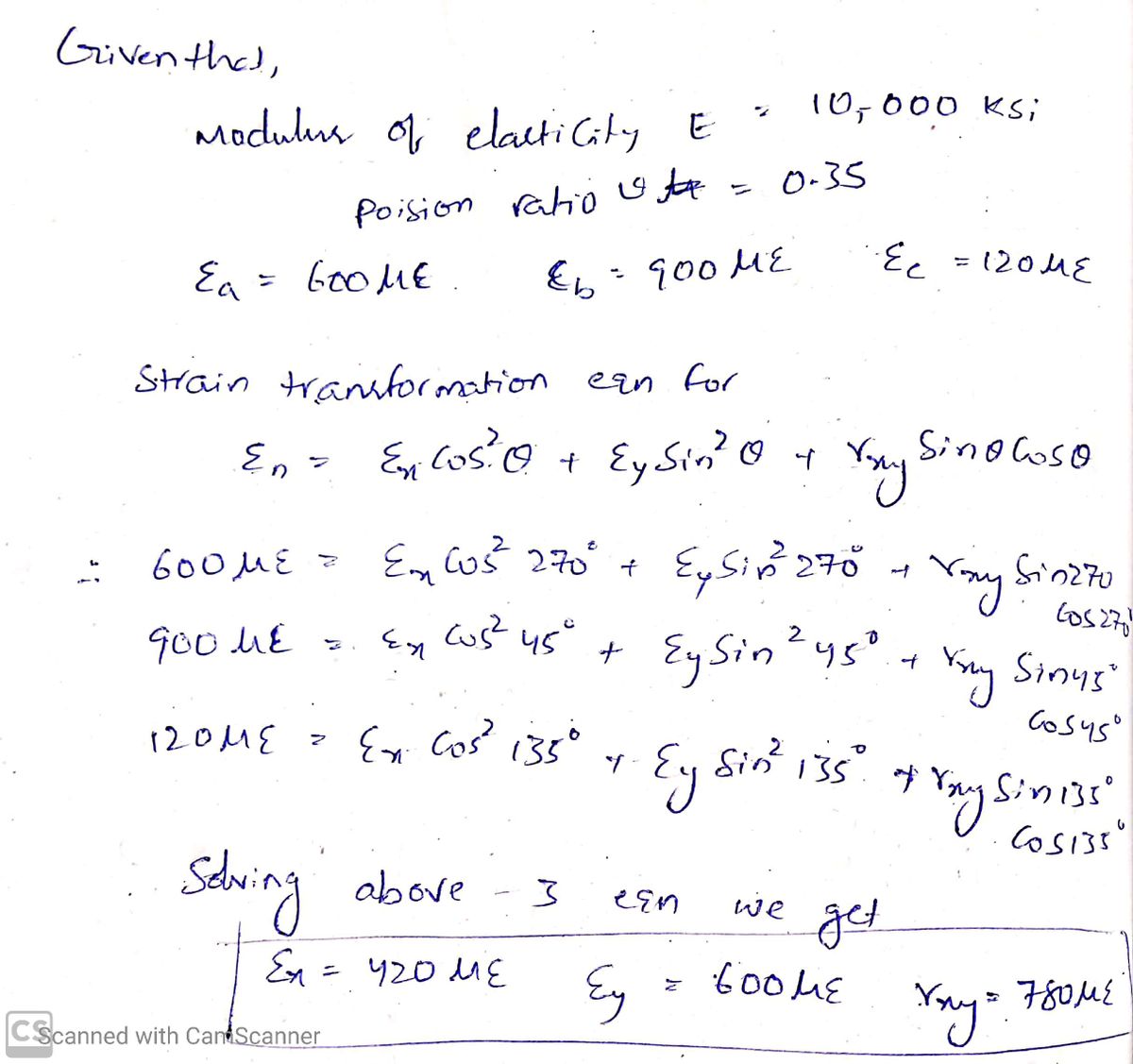The strain rosette shown in the figure was used to obtain the following normal strain data on a piece of aluminum. The plate has a modulus of elasticity of 10,000 ksi and a Poisson’s Ratio of 0.35. The strain readings were εa = 600 με, εb = 900 με, and εc = 120 με. Note: 1 με = 1 X 10-6 in/in. a) Calculate the normal strain in the x- and y- directions (εx and εy) and the shear strain (γxy) using a system of equations. b) Calculate the normal stress σx in ksi. Clearly indicate Tension (T) or Compression (C). Note: even though the normal stress in the z-direction is zero, but the normal strain in the z-direction is NOT zero. [Ans. to Check σx = 7.18 ksi (T)] c) Calculate the normal stress σy in ksi. Clearly indicate Tension (T) or Compression (C). d) Calculate the shear stress τxy in ksi.
The strain rosette shown in the figure was used to obtain the following normal strain data on a piece
of aluminum. The plate has a modulus of elasticity of 10,000 ksi and a Poisson’s Ratio of 0.35. The
strain readings were εa = 600 με, εb = 900 με, and εc = 120 με. Note: 1 με = 1 X 10-6 in/in.
a) Calculate the normal strain in the x- and y- directions (εx and εy) and the shear strain (γxy) using a
system of equations.
b) Calculate the normal stress σx in ksi. Clearly indicate Tension (T) or Compression (C). Note: even
though the normal stress in the z-direction is zero, but the normal strain in the z-direction is NOT
zero. [Ans. to Check σx = 7.18 ksi (T)]
c) Calculate the normal stress σy in ksi. Clearly indicate Tension (T) or Compression (C).
d) Calculate the shear stress τxy in ksi.


Trending now
This is a popular solution!
Step by step
Solved in 2 steps with 2 images









